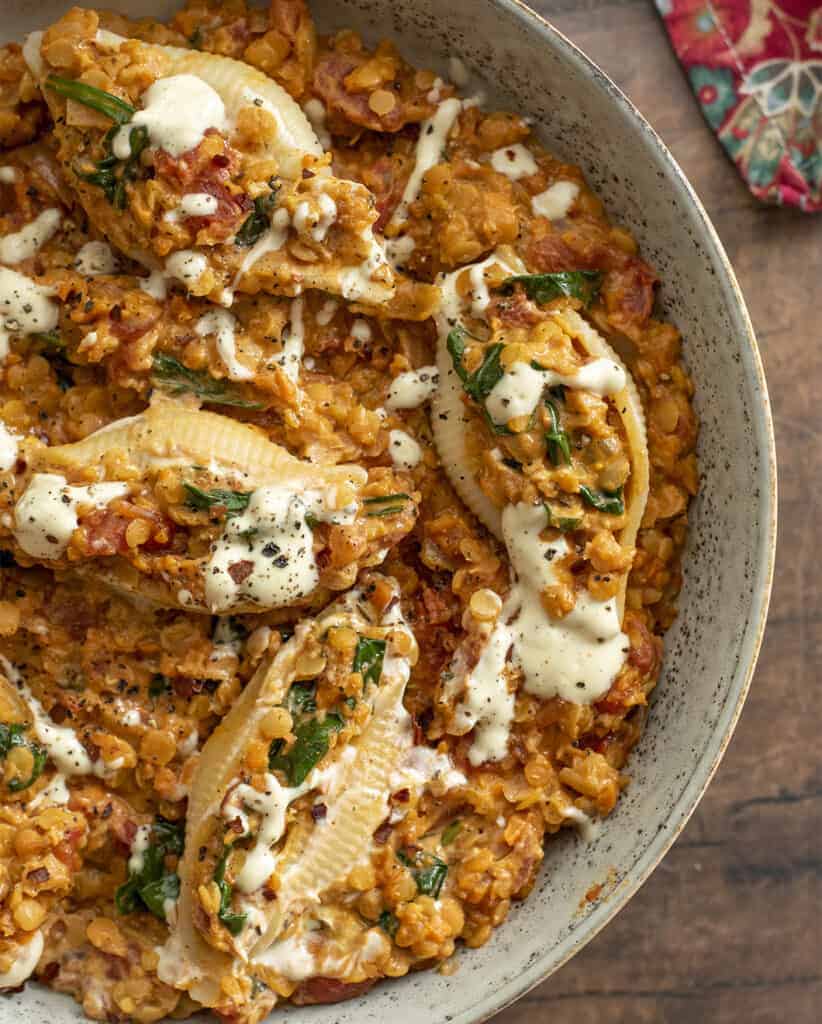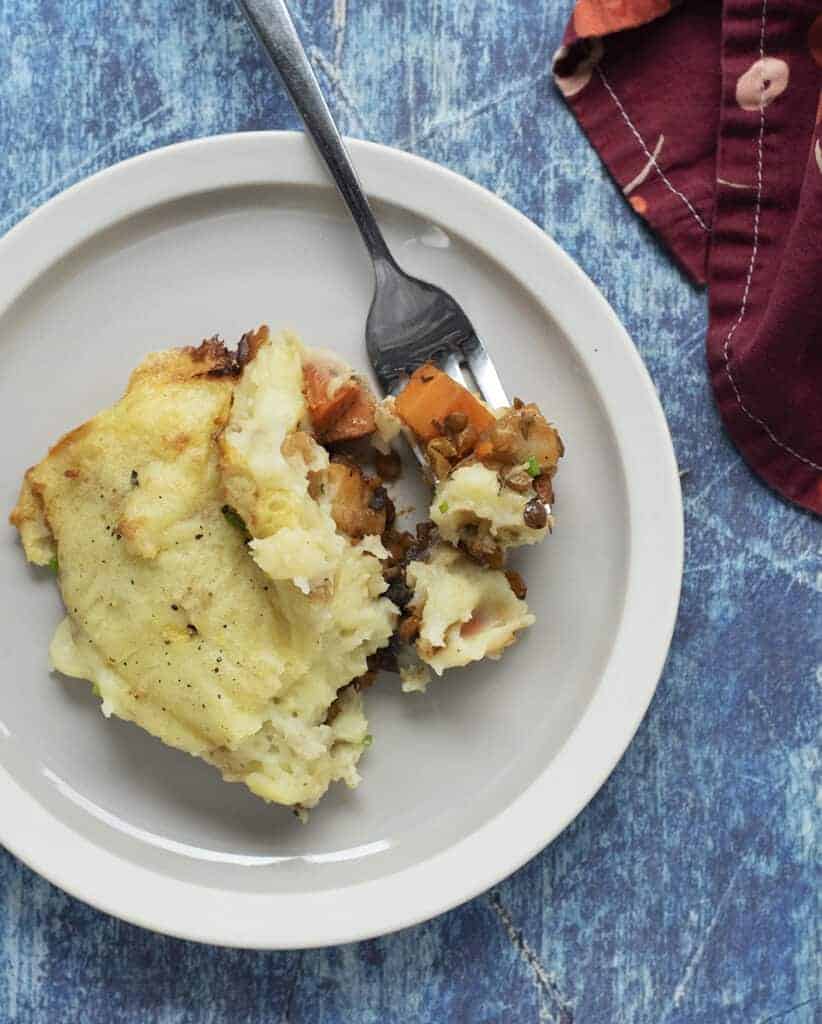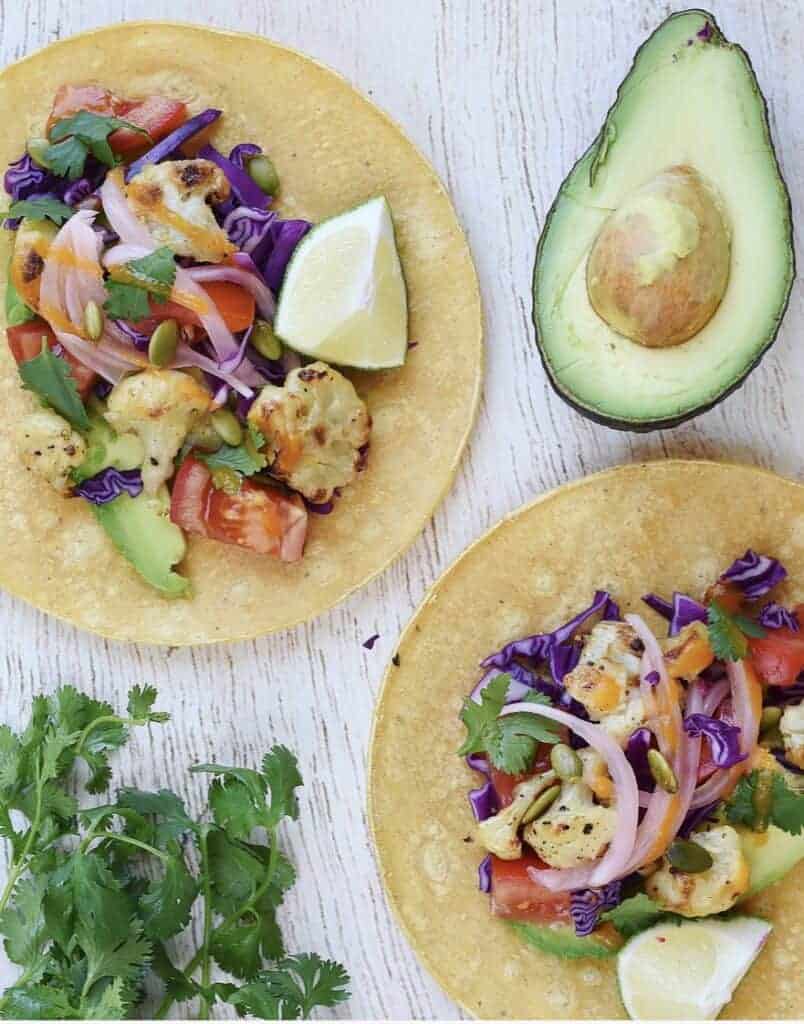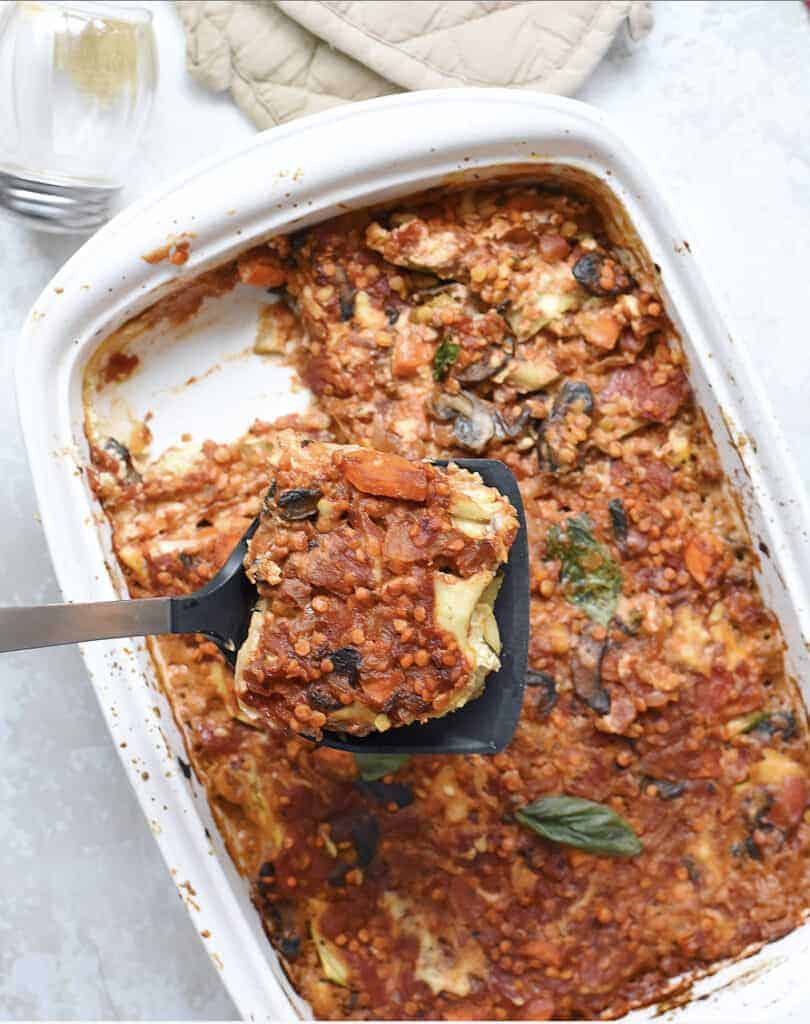This How to Cook Lentils: Protein for Vegans post includes affiliate links. When I find a great product or service, I like to share it with my readers. Sometimes I use affiliate links so I can earn a commission for my recommendations. Thank you for your support!
How to Cook Lentils: Protein for Vegans
If you’re new to vegan cooking, you might be wondering about lentils. Maybe you have questions like: What are lentils? Are lentils good for you? What is the trick to cooking lentils? And, what are some good vegan lentil recipes?
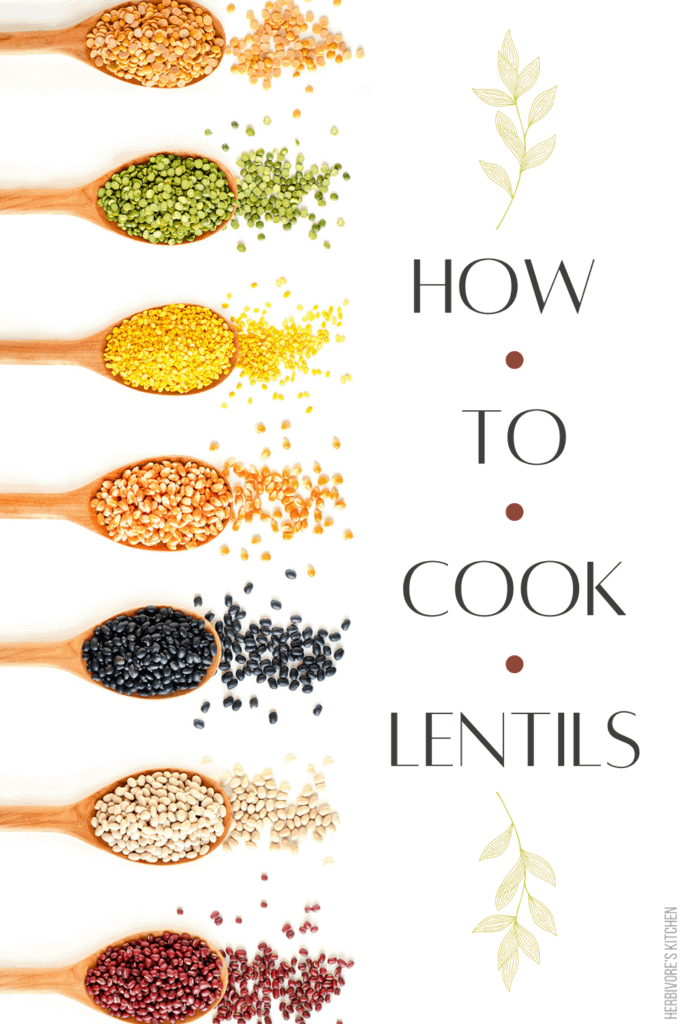
In this blog post, I explore these vegan-friendly, protein-packed powerhouses. I explain what they are and how to cook with them. Then, as a reward for hanging in with me, I share some of my favorite vegan lentil recipes at the end.
What Are Lentils?
Lentils are legumes, similar to beans, chickpeas, soybeans and peas. The word lentil comes from the Latin word lens, an apt description for these tiny disc-shaped edibles.

How to Shop for Lentils
You’ll most often find lentils among the rice and dried beans at the grocery store. Lentils are pantry items, so they’re easy to buy and store… and reach for when you’re looking for a last-minute easy vegan meal.
I store my lentils in screw-top jars to protect them from moisture. Then I replace them from the bulk foods section — the other place where you might look for them when you shop — when necessary. Lentils will last a long while, but they are best used within a year of purchase. Don’t worry though! This will be easy when you get a look at my vegan lentil recipes below.
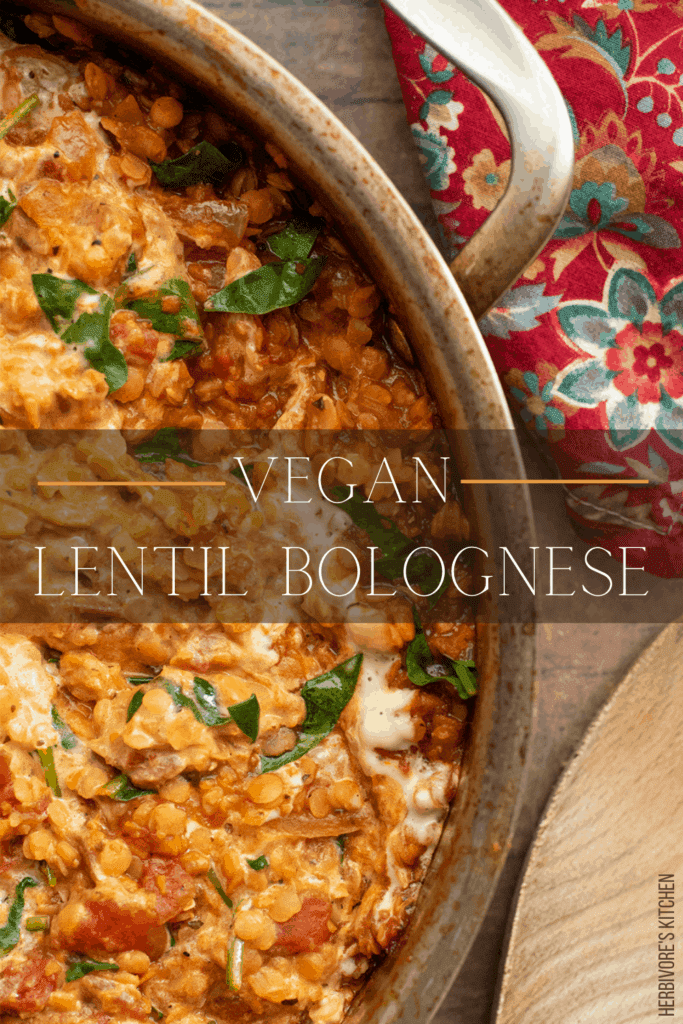
When shopping for lentils, you may notice different types. Among the most common are brown lentils, green lentils, red lentils and black lentils. Each variety has a different cook time and consistency when cooked. For example, green and brown lentils take longer to cook and maintain their shape and some firmness throughout the cooking process. They’re popular in dishes like vegan meatloaf and lentil soups. By contrast, red lentils and beluga lentils (or black lentils) cook quickly. Red lentils become soft when cooked, so they’re perfect for vegan recipes like dal and lentil bolognese. Beluga lentils remain firm making them a great addition to salads.
How to Cook Lentils
Personally, I love cooking with lentils. They are a staple in my vegan pantry. I often use them in place of meat in a traditional recipe, choosing the type of lentil based on the consistency and flavor of the dish.
I talked about about consistency above, but lentils also have different flavors. Brown and green lentils have a nutty, earthy taste. I most often cook with brown lentils, using them in dishes along side root vegetables, like carrots and potatoes. They’re also a great vegan ingredient to include in veggie burgers and vegan meatloaf.
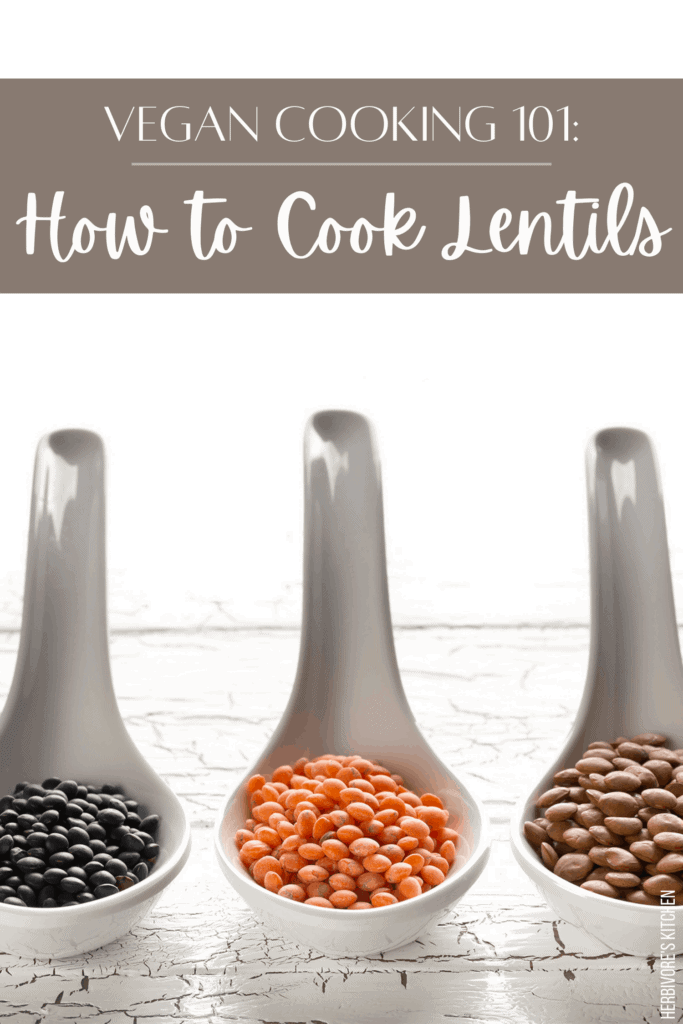
Red lentils are sweeter and more mild in flavor. I use them frequently in pasta sauces and as filling for tacos and burritos. I think they’re a great complement to tomatoes, curry paste and coconut milk. Unlike some legumes (I’m looking at you yellow split peas) red lentils get along well with tomatoes and other acidic ingredients, which can sometimes cause legumes to toughen and not cook thoroughly.
How to Cook with Lentils: What Does It Mean To Pick Lentils “Free of Debris”
When cooking with lentils, you’ll often see the instructions to first rinse the lentils and pick them free of debris. Lentils, like many grains, sometimes get packaged with rocks or husks leftover from harvesting. Before you cook them, you’ll just want to quickly look them over to make sure any of these items have been removed. It doesn’t happen often, but it’s worth making sure you don’t break a tooth on your latest vegan dish!
How to Cook Lentils: Turn Up the Heat!
First things first — you don’t want to eat uncooked lentils. Like many of their legume counterparts, lentils contain lectin. Perhaps you’ve heard this word recently in popular diets as something to avoid. But, rest assured, avoiding lectins doesn’t mean avoiding legumes.
What Are Lectins?
Lectins are carbohydrate-binding proteins that are thought to be part of a plants’ defensive mechanisms. As you might imagine of defensive mechanisms in food, lectins can lead to illness, including gastro-intestinal distress, if not properly disarmed.
So, how do you deal with lectins in lentils? The answer is pretty simple. You just need to cook them. The lectins in lentils are susceptible to high temperatures and cooking lentils nearly eliminates them.
How to Cook Lentils: Simmer Away!
Unless I’m making a salad that uses lentils as a topping, I don’t often simmer lentils outside of the dish I’m making. They’re most often cooked into my sauces and soups, absorbing the liquids from the other ingredients as they go.
If you are just looking for plain, cooked lentils they’re pretty low-maintenance. Unlike rice, they don’t require a specific measurement of water. Just submerge them in a pot, bring to a high simmer, then reduce the heat to a low simmer and let them go until they reach their desired consistency. Then, drain and serve.
When I am cooking lentils along side other ingredients, I usually start with 2 cups of water (or other liquid) for every 1 cup of lentils. Then, I watch my dish as it simmers, adding additional water to it as necessary. Lentils’ absorption properties are one of their assets, I think. I use them in my Easy Vegan Lasagna and Vegan Sloppy Joe recipes to absorb the liquids released when the dishes are cooked — leaving behind a thick, richness that’s full of flavor.
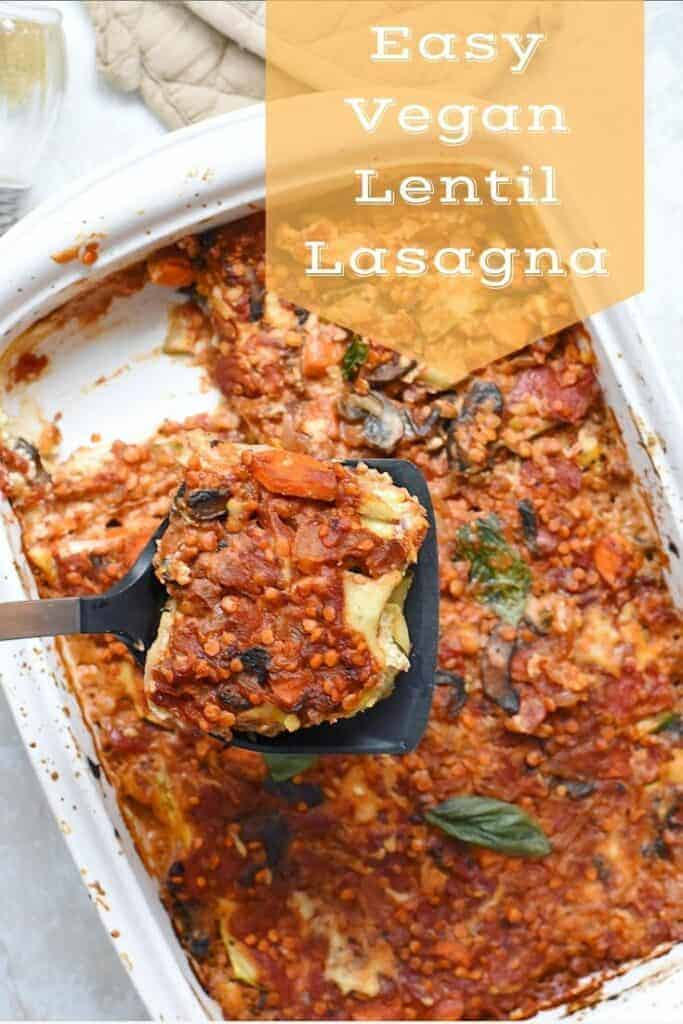
Red lentils usually take about ~20 minutes to reach the desired consistency, while green lentils take the longest at ~45 minutes. Brown lentils come to done right around ~30-35 minutes and black lentils (or beluga lentils) take about 25 minutes.
Lentils: Protein for Vegans and Good for the Planet?
I’m glad you asked! Yes, they are! And they’re good for the planet too!
Lentils are high in protein and fiber, making them a great ingredient to include in your vegan recipes. Depending on the variety, you’ll find other nutrients in there as well, including B vitamins, magnesium, zinc and potassium. Lentils are also high in antioxidants and are anti-inflammatory.
Lentils are earth-friendly too! Lentil production uses far less water than other dietary protein sources. They also require less nitrogen fertilizer because they create their own by drawing nitrogen from air. Lentils are soil efficient as well, leaving behind nutrients for future crops.
How to Cook Lentils: Lentil Vegan Recipes for Your Repertoire
Now that you know how to cook lentils and the benefits of cooking with lentils, here are some healthy vegan lentil recipes to add to your rotation!
Stuffed Shells with Creamy Vegan Lentil Bolognese
This easy stuffed shells recipe is the perfect introduction to vegan pasta. Whether you’re feeding omnivores or a true carnivore, you can’t wrong with this vegan recipe.
Easy Vegan Shepherd’s Pie Recipe
This Vegan Shepherd’s Pie Recipe is an easy way to get your comfort food fix and stay healthy. Made with lentils and plenty of fall-friendly vegetables, this savory vegan version of Shepherd’s Pie is a dinner your whole family will enjoy!
Spicy Red Lentil & Roasted Cauliflower Vegan Tacos
This vegan taco recipe includes a variety of taco toppings that are healthy, easy and designed for a crowd! Spicy red lentils and roasted cauliflower serve as the main ingredients, while homemade fresh tomato salsa, avocado crema, corn salsa, toasted pumpkin seeds and quick-pickled red onions make this vegan taco bar the best vegan dinner option ever!
Easy Vegan Lasagna Recipe
Lasagna makes pretty much everyone happy and, with this Easy Vegan Lasagna Recipe, now even vegans and plant-based eaters can enjoy this ultimate comfort food. This vegan lasagna recipe not only eliminates meat and cheese, it also replaces heavy white flour noodles with the more nutritious options of zucchini noodles and red lentils
About Herbivore’s Kitchen
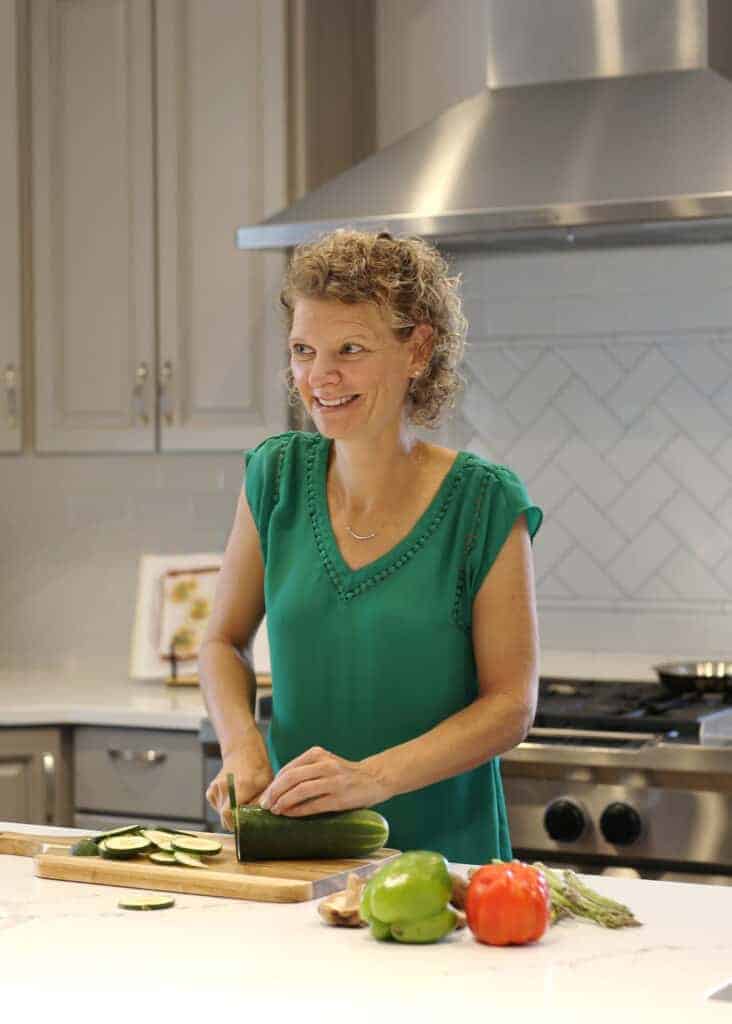
Herbivore’s Kitchen is a blog run by me, a plant-based home chef and aspiring food photographer. I switched my and my family’s diet to a plant-based diet after learning about the health benefits of going vegan. Making this change has prompted a variety of food and holistic-lifestyle related questions that I explore through this blog. I talk about how to pick and prepare the most nutritious foods, to how to reduce waste at home, to how to live a more sustainable lifestyle while on the road.

